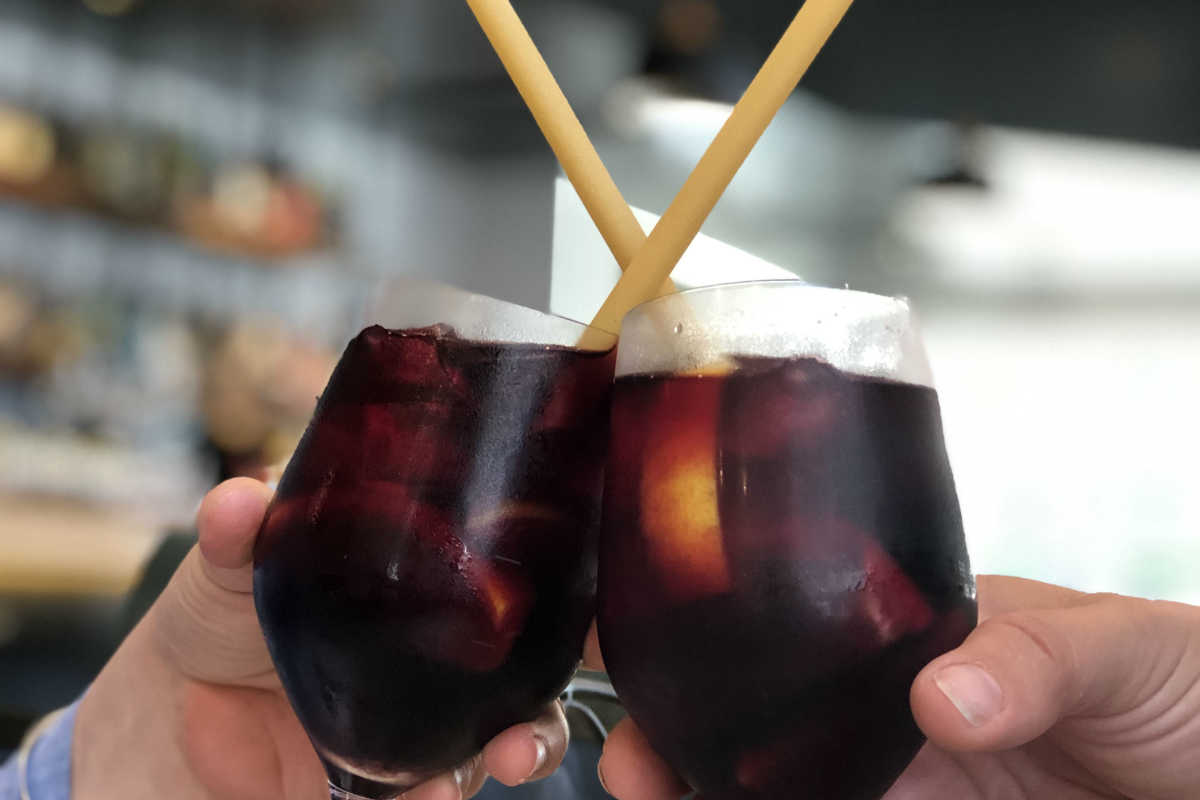After an exhausting August afternoon at the Newport Jazz Festival, I found myself at the recently opened Bar Cino, craving an Aperol Spritz. I eyeballed the bar set-up from my stool: amid the shakers and bitters was a cup filled with long, hard tubes of uncooked pasta.
I joked to my wife that the Italian restaurant was using raw pasta in place of paper or plastic straws. Within moments, the throwaway joke became reality: a well-made Aperol Spritz appeared with a comically long stick of pasta protruding from its glass.
Weird, but effective.
The pasta-turned-straw didn’t soften or collapse the way paper straws do, and didn’t leave any detectable flavor behind. In the spirit of curiosity I bit into the pasta’s submerged end once the drink was finished, which tasted like raw wheat with a slightly orange bent (I don’t recommend it).
I couldn’t stop thinking about these repurposed noodles in the days that followed. Had Bar Cino missed a shipment of proper straws and subbed in pasta as a last-minute substitute? Or was this an everyday policy?
The Story on Pasta Straws
Shawn Westhoven, who serves as the Beverage Director for the Newport Restaurant Group, provided answers over email. He was quick to credit Jesse Hedberg, Beverage Director at Newport’s Bar and Board Bistro, with giving him the idea. After seeing it in a beverage trade magazine, Hedberg tested the concept at his establishment and shared the results with Westhoven. (The phenomenon is not limited to the Ocean State, either. Since first noticing pasta straws in Rhode Island, team Bevvy has also spotted them in the wild at the Moxy Chelsea in NYC and at Dallas’s Revolver Taco Lounge, which places Tajín-seasoned pasta straws in its Palomas. It’s no surprise that bars in Italy are beginning to sip drinks through tubed pasta, too).
But before he could officially adopt the pasta straws, Westhoven wanted to run a series of lab-like tests.
“We bought a pound of the pasta and tortured them with acid and alcohol,” he says.
For the tests, Westhoven submerged what he refers to as “long ziti” or “large bucatini” in either lime juice or vodka for eight hours. The potential straws proved impervious to both citric acid and booze.
“The straws did not get soggy, and they gave the drinks absolutely no flavor,” he says.
According to Westhoven, the pasta straws have been well received by patrons.
“Guests absolutely love them and prefer them to paper straws because they do not break down or get soggy over time.”
Using pasta in place of paper or plastic also proved financially savvy, not to mention green.
“The cost of the [pasta] straws is comparable to paper, which is a few times more expensive than plastic. But we do not feel that plastic is a viable option,” Westhoven says.
So, the next time you find yourself mixing a Bloody Mary or Americano at home, be sure a packet of raw pasta is in the pantry: you could even use it to make lunch.



